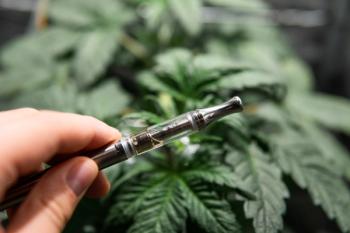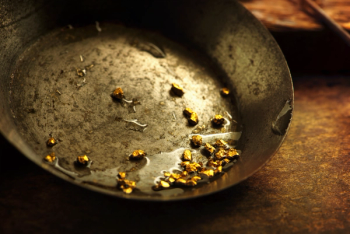
Cannabis Science and Technology
- November/December 2021
- Volume 4
- Issue 9
The Correct Filtration Tools for Hydrocarbon Extracts
An overview of standard hydrocarbon extract filtration equipment and media.
This article provides an overview of standard hydrocarbon extract filtration equipment and media. Due to the quality products they produce, closed-loop hydrocarbon extraction methods are widely popular in the cannabis industry. To make the purest extracts possible, producers opt to filter cannabis oil to remove excess plant materials. Filtration methods vary according to the chosen extraction equipment and the type of products being made. In this tutorial, we review extract filtration processes for inline dewaxing systems versus those that utilize winterization. By assessing and comparing these essential elements in hydrocarbon extraction, we help current and future cannabis companies better understand their options for extract filtration.
Hydrocarbon extracts are immensely popular with both medical and adult-use cannabis consumers. As the cannabis space has advanced, it has developed good manufacturing practices (GMP) akin to other industries such as food production.
Hydrocarbon extraction processes for cannabis have expanded with scope and sophistication. Yet, with so much available information on the topic today, cannabis companies sometimes have difficulty knowing what methods and equipment are best for their needs. This tutorial will review hydrocarbon extract filtration to better clarify this critical step in the manufacturing process.
Today’s commercial producers used closed-loop extraction systems to produce hydrocarbon extracts safely. Closed-loop extractors utilize either an inline dewaxing system or an additional winterization to chill materials to the required temperatures for filtration. Each of these practices has its filtration equipment and media.
What are Hydrocarbon Extracts?
Hydrocarbon extracts are typically made from butane or propane. Consumers enjoy hydrocarbon extracts because of their high quality and purity. Some of the most popular hydrocarbon extracts on the market are sauces, batters, shatters, crumbles, waxes, and sugars. Hydrocarbon extracts are also commonly infused in cannabis edibles.
Because butane and propane are highly volatile, hydrocarbon extracts can be hazardous if not handled properly. However,
Closed-Loop Extraction Machines
Closed-loop extractors are the industry standard for hydrocarbon extraction methods. With closed-loop systems, volatile hydrocarbons such as butane and propane never make contact with the open-air. By keeping these volatile compounds contained, closed-loop machines make hydrocarbon extraction much safer than in the early days of the industry.
Most closed-loop hydrocarbon extractors on the market today are certified for safety standards. Popular certifications for hydrocarbon extraction equipment are 3-A Sanitary Standards, Inc. (
What Does it Mean to Filter Hydrocarbon Extracts?
To make the purest cannabis products possible, producers filter hydrocarbon extracts during manufacturing. Filtration methods and equipment vary with the cannabis biomass in question and the desired end product type. Nonetheless, the fundamental scientific principles for filtering hydrocarbon extract remain the same regardless of equipment, biomass, and product.
Hydrocarbon extracts are filtered to
The filtration process for hydrocarbon extracts begins after the solvent has passed through the biomass. With the solvent housing, both valuable cannabinoids and excess materials such as chlorophyll, it is ready to be filtered.
Extremely cold temperatures are required for the filtration of hydrocarbon extracts to take place. For the best results, temperatures should be at a consistent -60 °C for both the solvent and biomass; when the extract reaches this temperature, fats and lipids containing unwanted plant materials are not solvated by the hydrocarbons. Any frozen fats and lipids that may be extracted can then be filtered from the rest of the hydrocarbon extract.
If done correctly, the
Inline Dewaxing and Hydrocarbon Extraction and Filtration
Extractors with inline dewaxing systems can extract, cool, and filter hydrocarbon extracts without the added step of winterization. Whether with butane or propane, inline extractors can accomplish the hydrocarbon extraction process without mixing an additional solvent.
The most identifiable element of extractors with inline dewaxing systems are dewaxing columns. Dewaxing columns are the part of extraction machines responsible for chilling the solvents and biomass to -60 °C. The columns are located between the solvent tank and collection plate on closed-loop extractors.
The dewaxing columns are surrounded by a jacket packed with extremely cold materials such as dry ice, chilled alcohol, or liquid nitrogen. When the hydrocarbon extract passes through the dewaxing column, it reaches -60 °C and freezes fats and lipids in preparation for filtration.
Certain manufacturers prechill their biomass to -80 °C before extraction, on top of chilling the dewaxing column themselves.
The cannabinoid-rich solvent can then be passed through a filtration media such as activated carbon, bentonite clay, silica, or diatomaceous earth to remove unwanted materials. The required media varies depending on the type of biomass and desired end product.
The Correct Filtration Tools for Inline Dewaxing
Extremely cold temperatures are essential when it comes to filtering hydrocarbon extracts. The correct filtration tools for the process are dedicated to either cooling the solvent or filtering it after adequately cooling it.
Products made from extractors with inline dewaxing systems will utilize a combination of the below filtration equipment and media.
Filtration equipment for inline dewaxing:
- Column remediation columns
- Cooling materials (dry ice, chilled alcohol, liquid nitrogen)
- Inline baffle and bead kits
- Micron and submicron mesh screens
Filtration media for inline dewaxing:
- Diatomaceous earth
- Activated carbon
- Bentonite
- Silica
- Alumina
- Molecular sieves
Winterization and Hydrocarbon Extraction and Filtration
Extractors that aren’t integrated with dewaxing columns must add the additional winterization step to get solvents and biomass down to -60 °C for filtering. Unlike those made with dewaxing columns, hydrocarbon extracts made via winterization must be mixed with another solvent—commonly ethanol.
To winterize a hydrocarbon extract, it is moved to a reactionary vessel after the solvent has passed through the solvent tank and into the collection plate. The entire vessel is then moved to a winterization freezer and brought down to -60 °C. In time, a layer of fats and lipids form on top of the ethanol, and the mixture is ready for filtration.
To filter the extract after it has undergone winterization, it is poured through micron filters. After that, processors utilize vacuum pumps to pull extracts through a Buchner/Hochstrom device and filter paper. To catch the finest particulates, some manufacturers line filtration paper with diatomaceous earth.
The Correct Filtration Tools for Winterization
As seen with inline dewaxing systems, extremely cold temperatures are also vital in filtering through winterization. The primary difference between inline dewaxing and winterization has to do with how the cold temperatures are achieved.
Hydrocarbon extracts created through winterization generally utilize a combination of the below items. Nonetheless, each manufacturer likely has additional pieces of equipment they deem necessary in the process of winterization.
Filtration equipment for winterization:
- Ethanol
- Reactionary vessel
- Winterization freezer
- Micron and submicron plates or paper
- Vacuum pump
- Buchner/Hochstrom device
Filtration media for winterization:
- Filter paper
- Diatomaceous earth
- Activated carbon
Conclusion
With the establishment of GMPs in hydrocarbon extraction, our focus is beginning to shift from safety to product quality. As equipment manufacturers and regulatory agencies have worked together to provide safe parameters for hydrocarbon extraction, there is now ample room for producers to master their craft.
While the filtration of hydrocarbon extracts was often deemed unnecessary in the industry’s early days, it is growing increasingly important today. Whether with edibles or pure extracts, consumers are more interested in cannabis product purity than ever before.
To achieve the best results possible with hydrocarbon extraction, producers must have the correct equipment and media for the job. Looking at both inline dewaxing systems and winterization, some careful study can guide cannabis businesses to utilize the best tools possible.
References
https://extractiontek.com/about-us/ .https://www.3-a.org/ .https://www.nfpa.org/Training-and-Events/Certification/Certification .https://psinspectors.com/ .https://www.asme.org/certification-accreditation .https://ertelalsop.com/proper-cannabis-and-cbd-oil-filtration-whitepaper/ .
About the Author
DR. DOMINICK MONACO is the Director of Laboratory Operations for CLS Holdings’ newly opened approximately $4 million laboratory, and is responsible for all day-to-day operations inside the North Las Vegas facility. Dr. Monaco brings more than 8 years of licensed and regulated cannabis experience, starting back in 2012 when medical marijuana first opened in Arizona, he has held numerous positions, with escalating responsibilities year over year. He graduated from the University of Arizona College of Pharmacy, in Tucson, Arizona, with a Doctor of Pharmacy in 2010. Direct correspondence to:
How to Cite this Article
D. Monaco, Cannabis Science and Technology 4(9), 47-49 (2021).
Articles in this issue
almost 4 years ago
The Need for In-House Testing: I Hate to Say I Told You So But…almost 4 years ago
Looking with Light: Understanding Gas Chromatography, Part I: Gasesabout 4 years ago
Providing Sufficient Airflow for Plant Growth Environmentsabout 4 years ago
Authenticating the Natural Content of CBD ProductsNewsletter
Unlock the latest breakthroughs in cannabis science—subscribe now to get expert insights, research, and industry updates delivered to your inbox.



